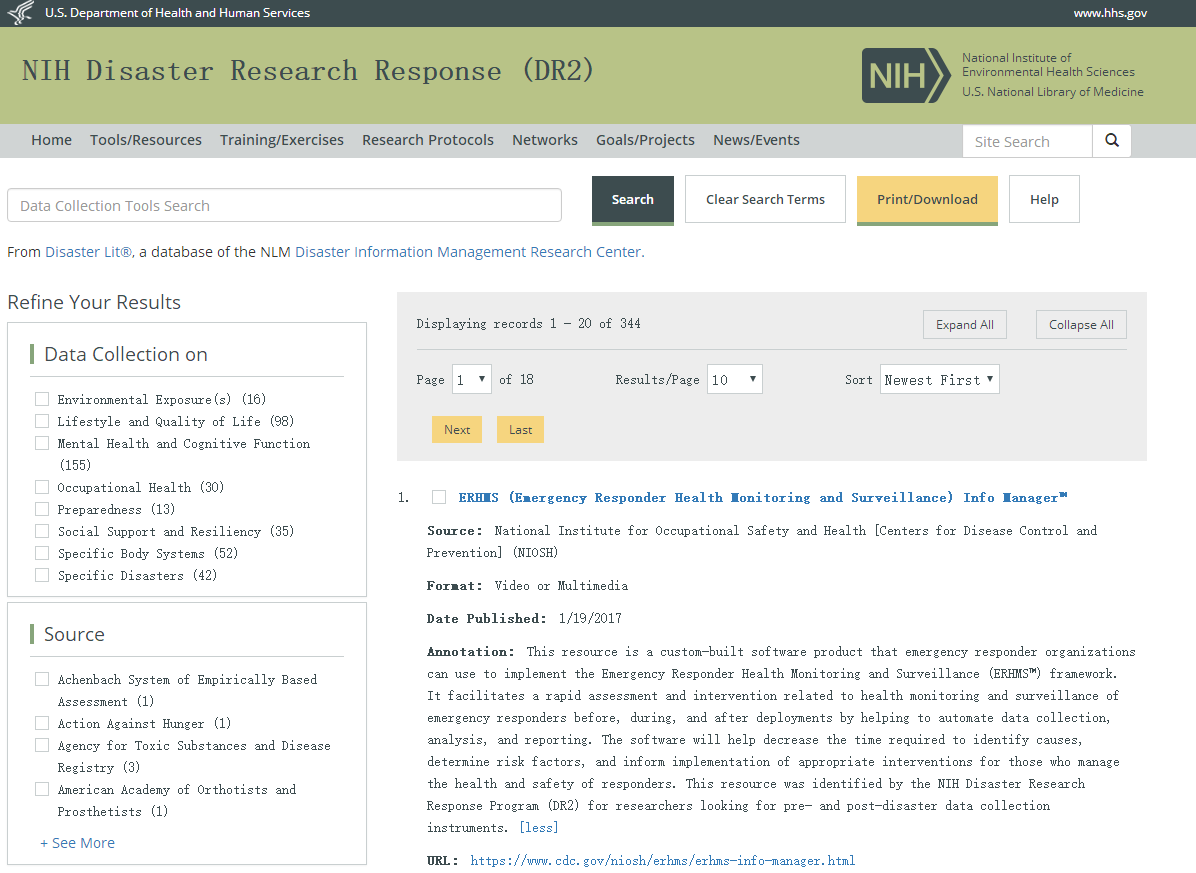Student Project done by:
- LAI Ching Wun
- LAM Chun Kuen
- LEUNG Wai Ching
- THOMPSON Secily Aniela Marie
Their slides can be downloaded here
NIH Disaster Research Response (DR2) is the national framework for research on the medical and public health aspects of disasters and public health emergencies.
- Public health informatics database created by the National Institute of Environmental Health Sciences and the National Library of Medicine.
- Framework for researching medical and public health aspects of disasters and public health emergencies.
- Offers tools, research protocols, disaster research, disaster news, and events.
Program Goals
Readily Available Data Collection Tools and Research Protocols.
- Rapid response clinical and epidemiologic research for disasters
- Field tested, IRB and OMB approved tools and protocols
- Implementation guidance, forms, and participant tracking information
- Hosted on publicly accessible NLM website. Records describing data collection tools are now available.
Environmental Health Research Response Network.
- NIEHS intramural/extramural researchers, centers, grantees, and academic partners
- Engaged in the development and prioritization of the system and tools
- Trained research responders who are familiar with data collection tools, protocols, and can deploy in a disaster
- Listing of subject matter and information experts that can be called upon for assistance
Coordination and Integration with Disaster Response and Recovery Infrastructure
- Multi-stakeholder engagement and information sharing
- Training exercises for research responders and partners
- Disaster Research Response Workshop
- Facilitate state and local environmental health research response capabilities regardless of federal disaster declarations or efforts
Sustainment of Program
After proving the utility of this program, DR2 aims to:
- Expand Portfolio Analysis to all of Health and Human Services (HHS)
- Continue funding the program
- Expand the website and databases
